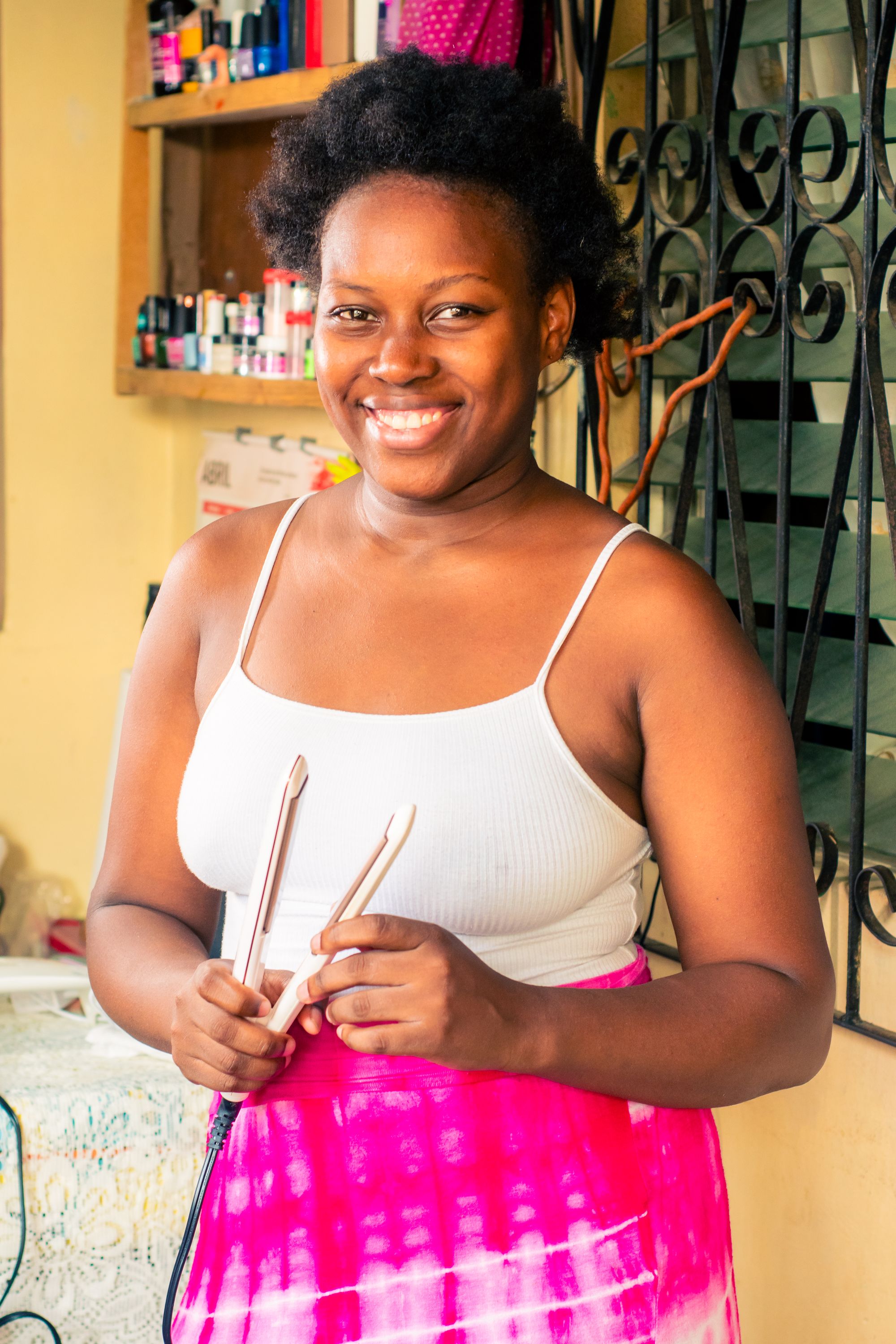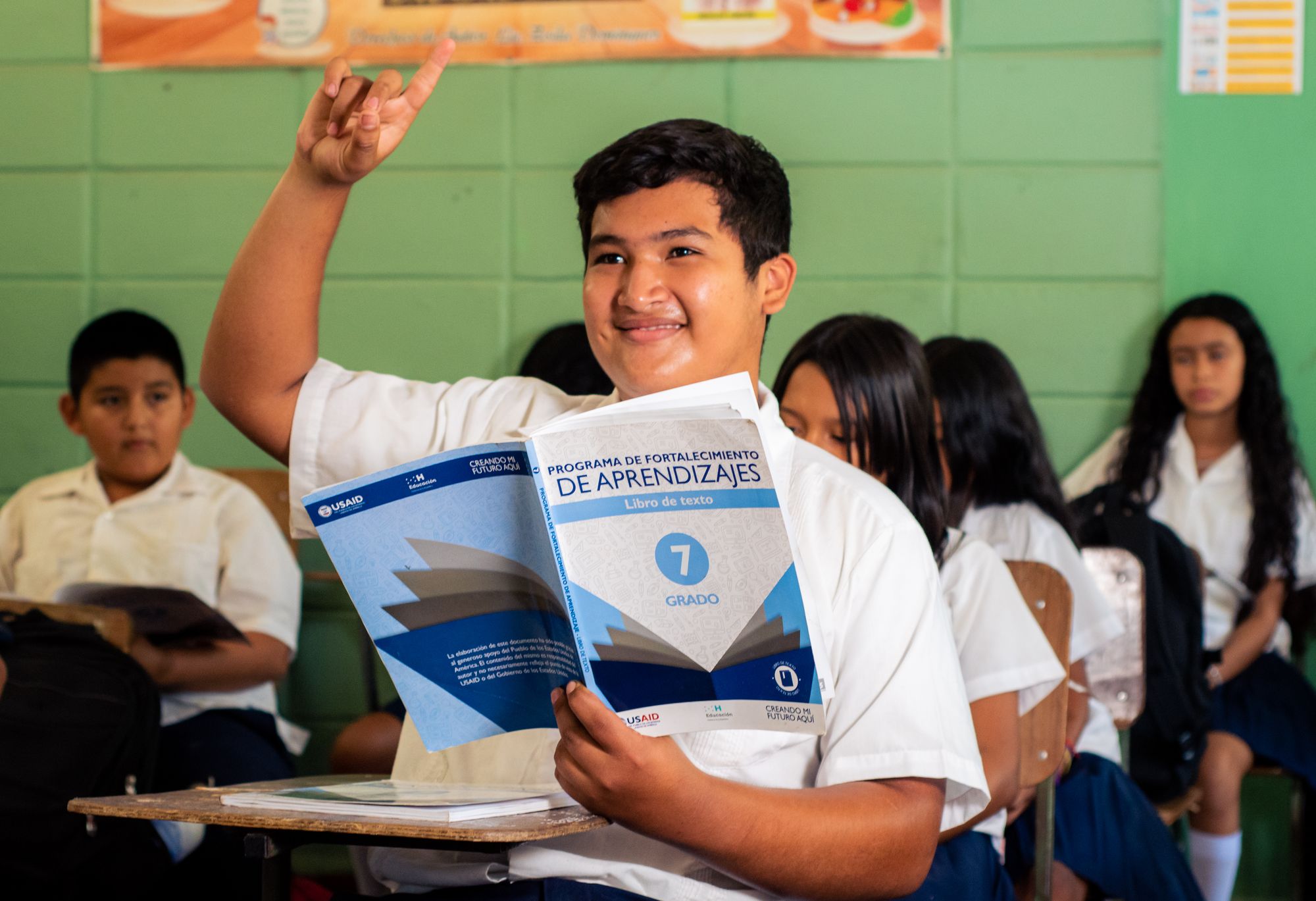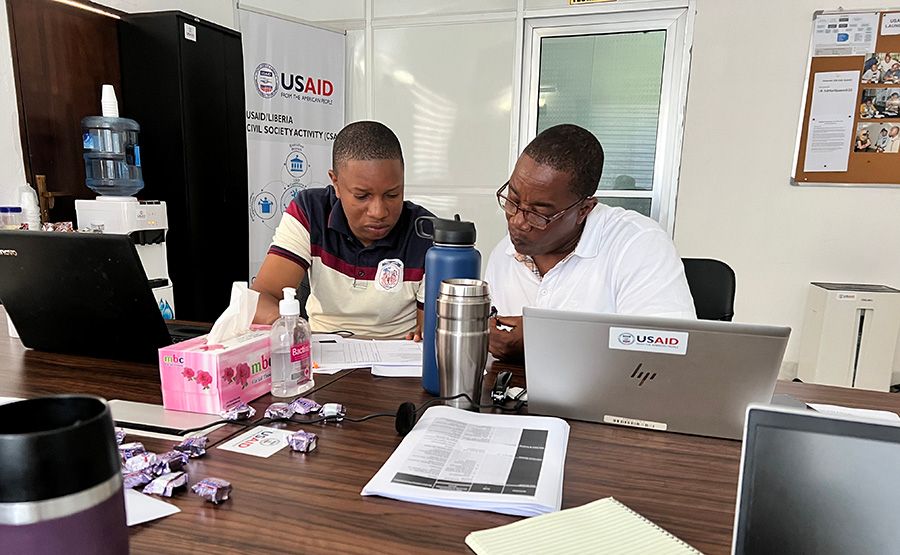Economic pressure is often cited as the key reason young people risk everything to migrate from Honduras. But with years of experience in the country, the DAI team implementing a U.S. Agency for International Development (USAID) project knew that “economic reasons” did not tell the whole story. A recent survey commissioned by the project gathered often-overlooked data to provide a more complete picture of the complex motivations behind migration—and inform programs to help young people envision promising futures in Honduras.
A Survey of Critical Firsts
USAID’s Creando Mi Futuro Aquí (Creating My Future Here) Activity launched in September 2021 with the goal of preparing 500,000 youth to contribute socially and economically to Honduras. The project provides workforce development skills and employment opportunities to young people so that they can envision and secure a future in their country and avoid irregular migration. In early 2022, with the goal of informing its program design, the project commissioned a partner, the Mennonite Social Action Commission, to collect data from 2,300 returning migrants (ages 13-30) at Returned Migrants Care Centers in Omoa and La Lima, Cortes.
The information the team needed—detailed data on the educational attainment of returning migrants—is rarely, if ever, collected. Many previous studies stopped at identifying the highest education level reached, not the final level of education completed. Those figures included younger children who were not old enough to have reached high school. As a result, data frequently indicated that about two-thirds of all migrants had no secondary education at all.
Creando invests heavily in improving high school education. To develop more accurate insights into the relationship between higher levels of education attainment and lower levels of out-migration, the team needed to know what percentage of migrants, aged 17 and older, had completed high school. The 2022 study revealed that 74 percent of migrants 17 and older were dropouts—only 26 percent had completed high school. Hondurans with any amount of post-secondary education represented just 5 percent of respondents.

Decisions of Desperation
The team’s second challenge was overcoming the common misconception that all Hondurans want to migrate. Or, put another way, that residents prefer migration over building a future in their home country. While several studies have indicated that large majorities of young people want to migrate for financial reasons, DAI’s experience with high school educators and students on another USAID project—Asegurando la Educación—suggested that the issues contributing to decisions to migrate were more complex. Large numbers of young people borrow heavily and leave their families and friends out of desperation, driven to migrate partly for economic reasons, but—critically—only when they become so discouraged that they can no longer conceive of a safe, viable future in Honduras.
Indeed, Creando’s 2022 survey revealed that nearly 94 percent of returning migrants would prefer to remain in their own country if they had promising futures there. In fact, 85 percent of respondents reported that they would be motivated to remain if they had a job in Honduras. Some 88 percent of respondents placed high importance on searching for a job with any salary as a driver of their migration in the first place.
Again, DAI’s previous work on Asegurando demonstrated that alternative education, career planning, and guided visits to successful businesses, among other activities, can help young people envision that promising future in Honduras. Likewise, more than 83 percent of returnees reported that they would be motivated to remain in their native country if they could enroll in alternative education programs with flexible schedules. Just over 91 percent would remain if they could complete their high school diplomas online, while a solid career plan and a promising future would motivate 92 percent to remain in Honduras.

Looking Beyond Economic Reasons for Migration
Creando’s survey was also the first known study to examine certain aspects of the “economic reasons” that drive migration. Again, the team knew from experience that extortion, intimidation, and other types of violence were forcing Hondurans to flee in search of safer environments to work and raise their families. Most studies stopped at asking if migrants fled for reasons related to economic concerns, educational issues, threats of violence, or other factors. And like previous surveys, Creando’s, too, revealed that 84.5 percent of returnees cited economic causes driving their migration.
But that information alone paints an incomplete picture. Creando’s study revealed that 12 percent of returnees cited domestic violence as an important motivation, 48 percent were looking for a safer environment for themselves and their families, and 84 percent were searching for a work or business environment free of extortion and violence. In other words, those migrating in search of a non-violent work environment registered just a half a percentage point below those who reported “economic reasons” as the driver of migration.

A Program for Promising Futures
The 2022 survey findings have informed Creando’s program design. Given that more than 90 percent of returning migrants would prefer to remain in Honduras if they had promising futures and career plans, Creando’s primary goal became helping young people imagine that promising future before incurring a heavy debt to migrate—and giving them the tools to create it.
To help high school students envision that future, Creando now takes students on guided visits to airports, factories, coffee producers, resorts, supermarkets, restaurants, and various businesses to give them a glimpse of the types of careers they might expect if they remain in school and graduate. The project also helps students articulate a rudimentary life plan.
Creando’s 100-hour Career Preparation Course provides final-year high school students with the basic skills required to enter the workforce or university and helps them develop a more in-depth career plan. The project is also expanding career counseling services in more than 25 schools. The University Entrance Exam Preparation Course helps equip college-bound students to pass university admission tests. A professional coaching program helps young people who secure entry-level employment to navigate the challenges of new jobs and create career plans.
More than 91 percent of returning migrants reported that they would remain in Honduras if they could complete their high school diploma online—so Creando is assisting the Ministry of Education’s development of a user-friendly virtual program. The effort includes a study tour for five Ministry staff to visit Mexico to learn firsthand about the advantages and challenges of the country’s online program. Because 83 percent of returnees stressed the need for flexible, alternative education programs, Creando provides school supplies, remedial workbooks, and life planning sessions for at-risk students attending weekend programs. For older students, the project has partnered with 12 technical and vocational education (TVET) centers to offer new courses in hairstyling, motorcycle repair, residential electricity, sales, and food preparation.
Domestic and other types of violence also play a role in decisions to migrate. To address this issue, the project implements USAID’s proven Safe Learning Spaces Program in 50 schools, focusing on five cities with the highest rates of crime and violence. Creando provides social-emotional learning skills that help teens navigate environments of conflict and crisis. The Career Preparation Course for final-year high school students includes four hours of gender equity, social inclusion, and gender-based violence prevention training. For human resources managers across the country, Creando conducts a four-hour gender equality and social inclusion workshop to promote fair hiring practices and reduce workplace discrimination and harassment.

Supporting Returned Migrants
Finally, the project has supported 1,650 returned migrants with a range of education and workforce development services to help this population envision and realize a future in Honduras. This task is not easy, in part because most families have already borrowed heavily to pay human traffickers to escort them to the United States. The fee often includes three attempts. If the first trip is unsuccessful, migrants can try again at no additional cost. In fact, before receiving Creando services, more than 52 percent of the returned-migrant respondents reported that they had future intentions to migrate as compared to about 27 percent of Creando’s other youth beneficiaries.
About 40 percent of returnees supported by Creando are school-aged young people. The project motivates them to complete high school by providing school supplies, tutoring, and other academic support. Approximately 28 percent of these older returnees received soft skills training, 20 percent returned to TVET programs, and 30 percent received job placement support. More than 36 percent of the older participants have found employment.
The challenges facing Hondurans are formidable and at times overwhelming. To tackle those challenges, it’s important that Creando works with a credible growing evidence base. The 2022 returned migrant survey is an important building block underpinning a range of programs that provide hope for a better future among Honduran young people.







